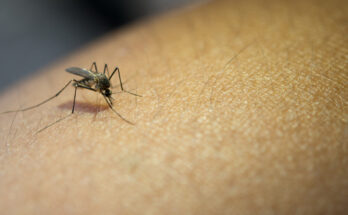The most common environmentally-related illnesses are caused by heat exposure. The temperature does not necessarily have to be very high. Even if the temperatures are still relatively mild, a 10° Fahrenheit (F) elevation from the previous five days significantly increases the danger of developing a heat-related ailment. This is due to the fact that the physiological mechanisms for thermoregulation become overwhelmed when there is less time to acclimatize than under more gradual conditions. When the body attempts to combat the heat gain as the temperature rises, the body begins to sweat, utilizing evaporative methods of heat loss. But when the heat gain overcomes the heat loss, the individual begins to experience a gambit of symptoms that increase in intensity shutting off the sweating mechanism and if not managed quickly, can result in death.
Heat-related illnesses encompass a wide spectrum of conditions with the most common being heat cramps, heat exhaustion, and heat stroke. The main treatment for all of these conditions is to remove the affected person to a colder area and to immediately cool them down.
Heat cramps are one of the first signs that the body is unable to cope with the rising ambient temperatures. They are characterized by cramping and spasms in the abdomen and legs, such as experiencing “Charlie horses” in the calves and thighs. After removing the individual from the heat and cooling them down, heat cramps can be managed by applying gentle but firm pressure to the cramped muscles. Also, by giving electrolytes and cold water in sips until the person’s symptoms disappear. Do not overload the person with water.
Most common in elderly, heat exhaustion is characterized by dizziness, excessive thirst, nausea, weakness, muscle cramps, and heavy sweating. By the time the sensation of thirst is apparent, the person is already dehydrated. As with all heat-related illnesses, first removing the victim from the hot environment and cooling them down is the main treatment. The preferred cooling method is a cold bath if possible. Otherwise, loosen the person’s outer clothing and apply cold compresses to the head and neck and offer water in slow sips. If the symptoms do not improve seek medical attention immediately.
Heat stroke is the most dangerous of the heat-related illnesses and can be fatal if not treated. At this stage, the body’s sweating mechanism stops, and confusion starts to appear along with a throbbing headache and hot dry skin. Nausea, dizziness, and weakness increase leading to altered mental status, fainting, loss of consciousness, seizures, and even death. Immediately call 911 and remove the person from heat. The method of treatment required is immediate cooling as rapidly as possible, preferably with an ice bath. Otherwise remove their outer clothing and apply ice packs to the head, neck, armpits, abdomen, and groin. Monitor them for breathing and responsiveness while you are waiting for emergency responders to arrive.
For further information on heat-related illnesses, go to https://www.cdc.gov/niosh/topics/heatstress/heatrelillness.html.
(Bio: Dr. Zender is an occupational and environmental physician with a background in medical journal writing, industrial accident mitigation, and environmental and chemical exposures.)



